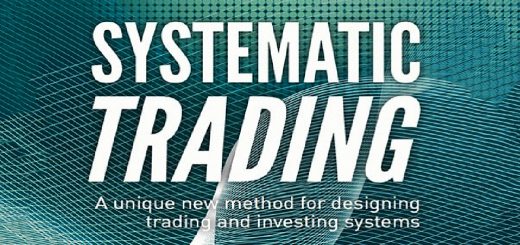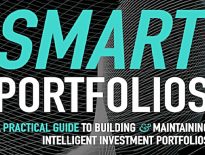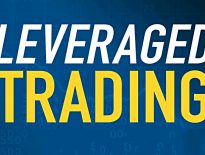Leveraged Trading 4 – Diversifying

Today’s post is our fourth visit to a new book by Rob Carver, one of our favourite financial authors. The book is called Leveraged Trading.
Diversification
In Chapter Seven, Rob discusses the benefits of diversification.
- He stresses that diversification is not intended to increase returns but to reduce risk.
This is an important point and one that I know from my experiences in financial coaching is not easy for all investors to appreciate.
As an example, Rob back-tested the combination of the Euro Stoxx 50 equity index with US 10-year bonds.
- The risk of the combined portfolio came in at 9.2% rather than the 12% target of the RSS.
This allows us to increase returns by adding leverage and trading each instrument at a higher risk target.
- The multiplication factor is 12%/9.2% = 1.304
Rob calls this the instrument diversification multiplier (IDM).
- This raises the risk target for each instrument 15.6%
Which in turn increases the expected return from the pair of instruments to 5.7%
- And of course, the Sharpe ratio.
How many instruments?
Diversification will likely increase your trading costs, but Rob notes that diversification is almost always better than using a larger account to trade a single cheaper instrument.
- With 15 or more instruments, the SR of the system will be more than double the 0.24 of the original RSS.
With 30 instruments, the SR is above 0.6
The downside is that you need more capital; to safely trade more instruments.
- It also takes up more of your time (if you are trading manually – Rob automates his trading).
Rob has three criteria for adding a new instrument to the system:
- It’s cheap enough to trade (below Rob’s “speed limit” of 0.08 RAC)
- You have the spare capital needed to trade it
- It offers good diversification from what you are already trading
- New asset classes are best
- Rob uses the correlations of trading systems in instruments, rather than the returns from the instruments themselves – the trading system correlations are much lower.
For spread betters, Rob’s system starts with gold, then adds the Euro Stoxx index, gilts and an FX rate (eg. EUR GBP).
- If you have a bad run of trading, you would drop an instrument to ensure you still have enough capital to trade safely.
- Rob uses a “last in, first out” rule to decide which asset to discard.
You should trade each instrument with the same amount of capital in order to maximise diversification.
- If you have more than one instrument within an asset class, then split your capital equally between the asset classes, then divide it up between instruments.
IDMs
Rob provides a table of IDMs to use for various numbers of assets.
- From 8 to 14 instruments, the IDM is 2.2
- It increases by 0.1 for each block of 10 instruments above that, topping out at 2.5 for more than 30 instruments.
The SR increases in line with the ISM, so for 30+ instruments, the SR is 0.6
- The theoretical risk target for the portfolio would also increase, as it is half the SR (half Kelly).
Rob caps the risk target at 25% for 30+ instruments.
- This works out at a 62.5% risk target for each instrument in the portfolio.
This assumes that you are trading instrument from multiple asset classes.
- With multiple instruments from a single asset class, Rob caps the risk target at 15% and the instrument target at 21%,
Higher risk targets for individual instruments reduce the level of capital required to safely trade them.
Conclusions
That’s it for today – we’ve covered another one-sixth of the book and are now two-thirds of the way through it.
- It was a simpler chapter today, perhaps because diversification is such a familiar concept.
- The key takeaway is that you should trade as many asset classes and instruments as your capital will allow.
In the next article, we’ll look at adding new trading rules to the system.
- Until next time.















